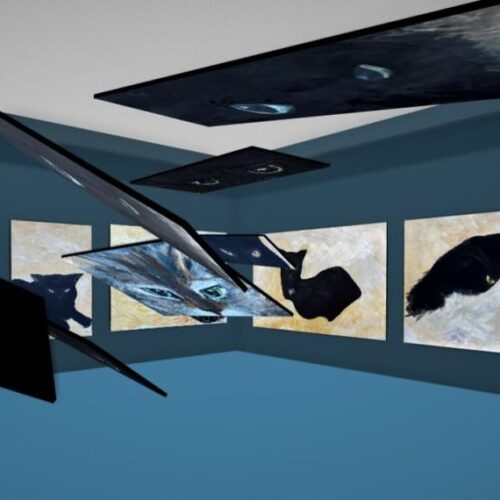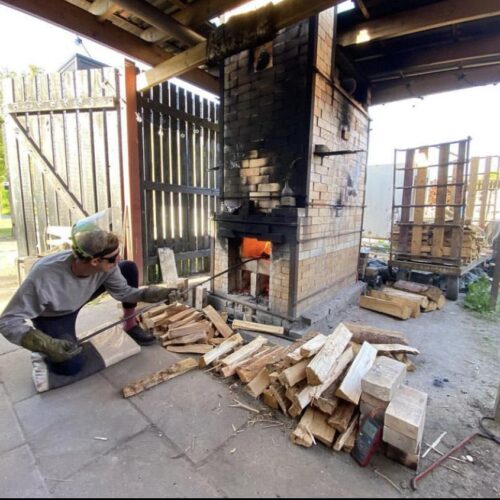
Using an Eraser
 Stop me if you’ve heard this one before.
Stop me if you’ve heard this one before.
‘Artists don’t make mistakes, so don’t use an eraser.’
‘Don’t rub anything out. Incorporate everything into the drawing.’
Ever been told anything like that? I think I have, but I don’t think I ever took much notice. Here’s the news: artists make mistakes and some of them need to be removed, so don’t be afraid of using an eraser. Of course, some marks are stubborn and refuse to disappear completely, leaving echoes of the work in progress. These resulting ghost marks, half—steps, incomplete gestures and so on can all add to the rhythm and density of a drawing. This is one of the qualities that distinguishes drawing (and painting, to a degree), from the other arts. When looking at a drawing we can see the work from start to finish; it becomes a palimpsest.

Matisse worked and re-worked images, creating drawings full of half-removed lines that show exactly what I mean.
It goes further than that, though. Erasers don’t just remove marks, they can make them, too. They can blend, smudge, blur, bruise, and partially remove. In conjunction with charcoal or pencil (the softer, the better), erasers can make all sorts of marks that would otherwise be impossible. Through experimentation, a complex vocabulary can be developed.

Look at the charcoal heads of Frank Auerbach to see complex multi—layered images that rely on initial marks being removed, shifted and veiled. He implies the image, and that’s down to the way marks are added and (partially) removed. Only a few of the marks are unadulterated, most are amended in some way.
It’s worth trying out lots of different types of eraser as they don’t all work the same way. I favour plastic erasers (the ones that often come with a cardboard sleeve), as they can push graphite around as well as remove it. Even really cheap rubbers can produce interesting effects. I’ve got one (sadly almost worn away), that is no good at completely removing pencil, but it does a wonderful job of softening it. Putty rubbers are fine, but they don’t hold a hard edge, so aren’t suited to really detailed work. You can now get cheap electric erasers which spin a small eraser at high speed, meaning it can be used incredibly specifically. Lay down a field of graphite and you can also draw with it.
One of the joys of drawing is its immediacy. It’s low-tech and visceral. Working back into a drawing with an eraser — sculpting, if you like — can open up all sorts of possibilities. Draw, erase, then draw again.






I love playing about with all the different kinds of rubbers! It brings a whole new sculpting sensation+effect to drawing! The layers+textures build up in the most fantastically unexpected way! After your study visit Bryan I went out+bought 1 of all kinds of erasers I could find (still not been able to get hold of that little electric 1 though…yet!) because I loved the fact that you had 2 or 3 pencils and a whole box full of rubbers,each with its own little ‘personality’ in the way it worked! It really tickled me! So now I have a growing collection of my own+would highly recommend giving it a go to anyone! The results speak for themselves!
Excellent. I think I got my electric eraser at R*man, but I’ve seen them in WHS and online. Google ‘electric eraser’ and a well-known rainforest and you’ll find them. Any decent art shop should have them. Daler do one, as do Jakar.
It seems that I am born to disagree with you, but really that is not true. I use erasers a lot but, as you have pointed out, they are not always for correction but for mark making. Sometimes, though, I want to work without correction as I feel it gives a bit of danger to the process. I was impressed that Goya, towards the end of his life, decided to correct nothing. Everything he did stood as it was as a record of his responses. With oil painting it is very easy to cover and correct. At the moment, I am using this to allow the image to develop and change. Several years ago, however, I got sick of that process and wanted to work more directly so took up egg tempera where I had to commit to a mark and let it be. For this same reason, I would like to try fresco- just put it on and leave it. How refreshing. Now where did I put that rubber?
As an amateur comic drawer, it was always painful to erase the pencil after inking – but I did photocopies before. On the other hand, this could be applied to other arts as well. Surely, in music one can definitely erase everything, or simply start writing on a different page, ignore what was written and play the final version. However, on one specific occasion I decided I was going to “cross out” two bars, not by erasing or deleting, but instead by actually writing more notes on them. I had worked too much on the original two… and in the end, the scratched bars fitted perfectly (to my eyes) in the final work, making it all in all better.